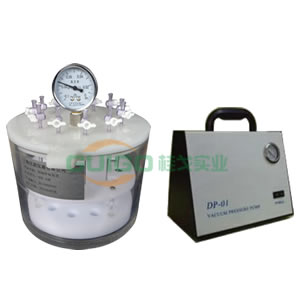Application of Guige Solid Phase Extraction Technology in Environmental Analysis

Since trace amounts of the components to be measured are mostly present in complex matrices, the task of environmental sample preparation is even more difficult. In a variety of sample preparation methods, solid-phase extraction technology is simple and easy to perform, which can significantly improve chromatographic separation, extend the life of the chromatographic column, and reduce the detection limit of the method. The application of solid phase extraction technology in environmental analysis is mainly elaborated from the following aspects.
01. Application of solid phase extraction technology in water body analysis
As long as drinking water, groundwater and sewage do not contain a large amount of solid particles, they can be directly used for solid phase extraction. Groundwater and sewage may need to be filtered before using solid phase extraction. If the compound of interest is bound to the discarded particles, filtration will reduce its recovery. If possible, do not filter the sample, let the unfiltered sample pass directly through the solid phase extraction device, and let the solvent pass the particles above the adsorbent during the elution process. This will increase the recovery rate, because in this way, the compound of interest bound to the particles will be recovered. In most cases, water samples are extracted using reversed phase or ion exchange solid phase extraction.
For the determination of pesticide residues in water, non-polar adsorbents such as C18 and C8 are generally used. They are usually conditioned with methanol and water, and methanol is used as the eluent. Due to strict requirements for pesticide residue limits in water bodies, the mass concentration of pesticide residues in natural water bodies is also usually very low. Without reliable separation and enrichment methods, it is difficult to detect, and solid phase extraction technology can be used for extraction, enrichment and purification Completed in one step. Pre-concentrate a large volume of sample through a solid phase extraction column, elute with a small volume of eluent, and then concentrate to a fixed volume for detection, which greatly reduces the detection limit of the detection method.
02. Enrich trace organic compounds in ambient air
Volatile and semi-volatile substances account for 90% of the ambient air pollutants, and the rest are particulate pollutants; particulate pollutants can be captured with a filter membrane, and solid phase extraction (solid adsorption) is generally used for volatile and semi-volatile, Solution absorption and low temperature condensation enrichment sampling. Solid phase extraction and enrichment of organic matter in ambient air is to install a stationary phase of uniform particle size into a small column, and let air pass through the small column at normal temperature or low temperature. Due to the different partition coefficients of organic compounds between the gas phase (air) and the stationary phase Keep the compound to be captured on the small column, and the normal components in the air, such as nitrogen and oxygen, flow out through the small column to achieve the purpose of enriching organic compounds.
03. Application of solid phase extraction technology in the analysis of pesticide residues in soil
The determination of pesticide residues in the soil generally involves first extracting the pesticide to be tested from the soil sample using appropriate extraction solvents and extraction methods, and then purifying it by solid phase extraction technology. The properties of the pesticides to be tested are different, the extraction solvents used are different, and the properties of the impurities brought from the matrix are also different. Therefore, it is necessary to select an appropriate adsorbent to achieve the separation and purification of the pesticides to be tested. For the analysis of highly polar pesticides, when using a highly polar extraction solvent such as acetone-water system, a non-polar adsorbent such as C18 can be used, so that strong water-soluble impurities in the extraction solvent will not remain on the adsorbent , Which is conducive to the purification of samples; when analyzing weakly polar pesticides, when using a less polar extraction solvent, you can choose a polar adsorbent such as Florisil, etc., it will not retain weak polar impurities in the extraction solvent, Then select the appropriate solvent to rinse the residual pesticide to be tested for determination.
Carving Mirror Frame,Hand Carved Wood Framed Mirrors,Wood Carving Frame Patterns, Wooden Carving Mirror Frame
ZHEJIANG NEW WOOD MATERIAL TECHNOLOGY CO.,LTD , https://www.newmaterialfurniture.com